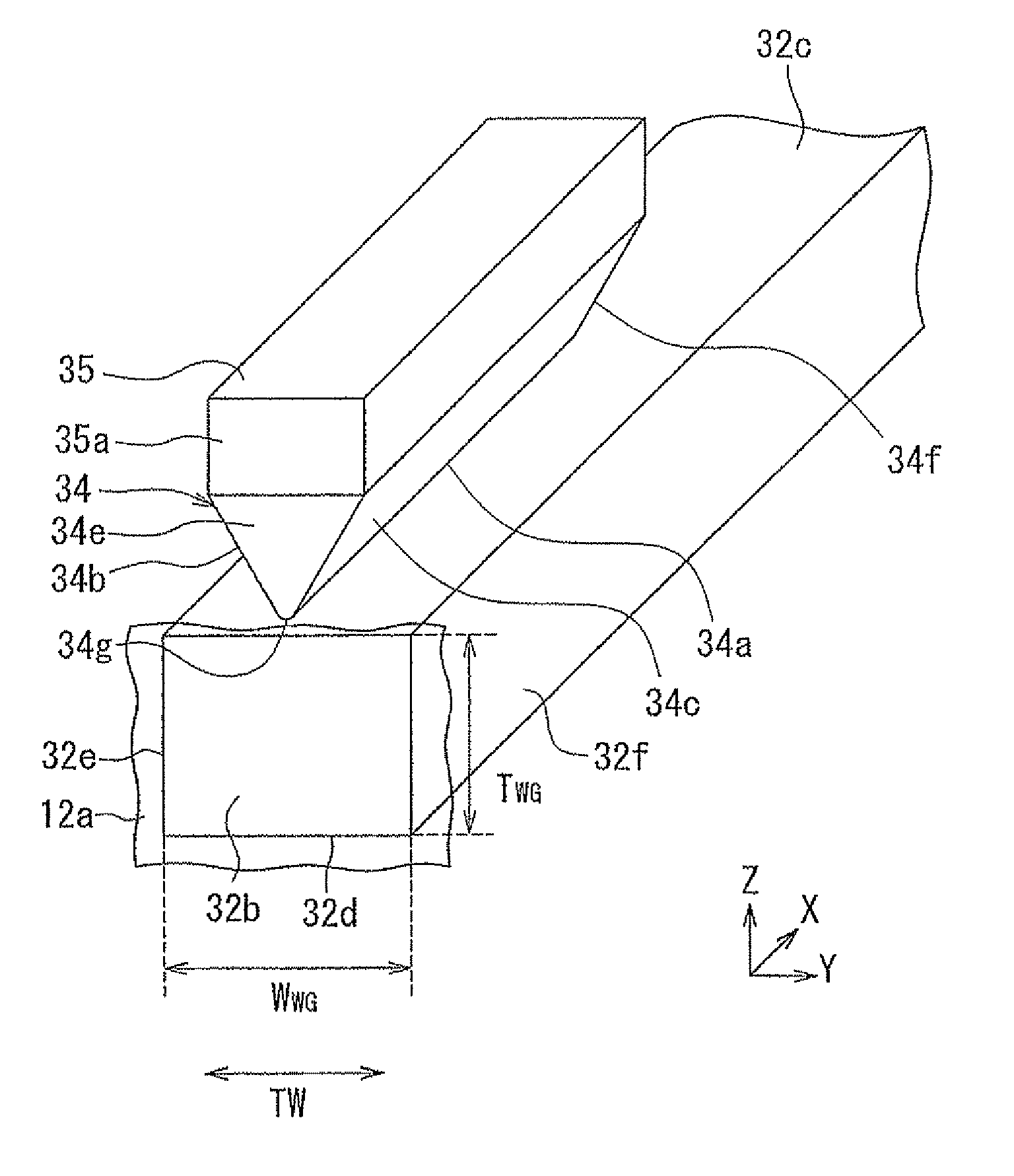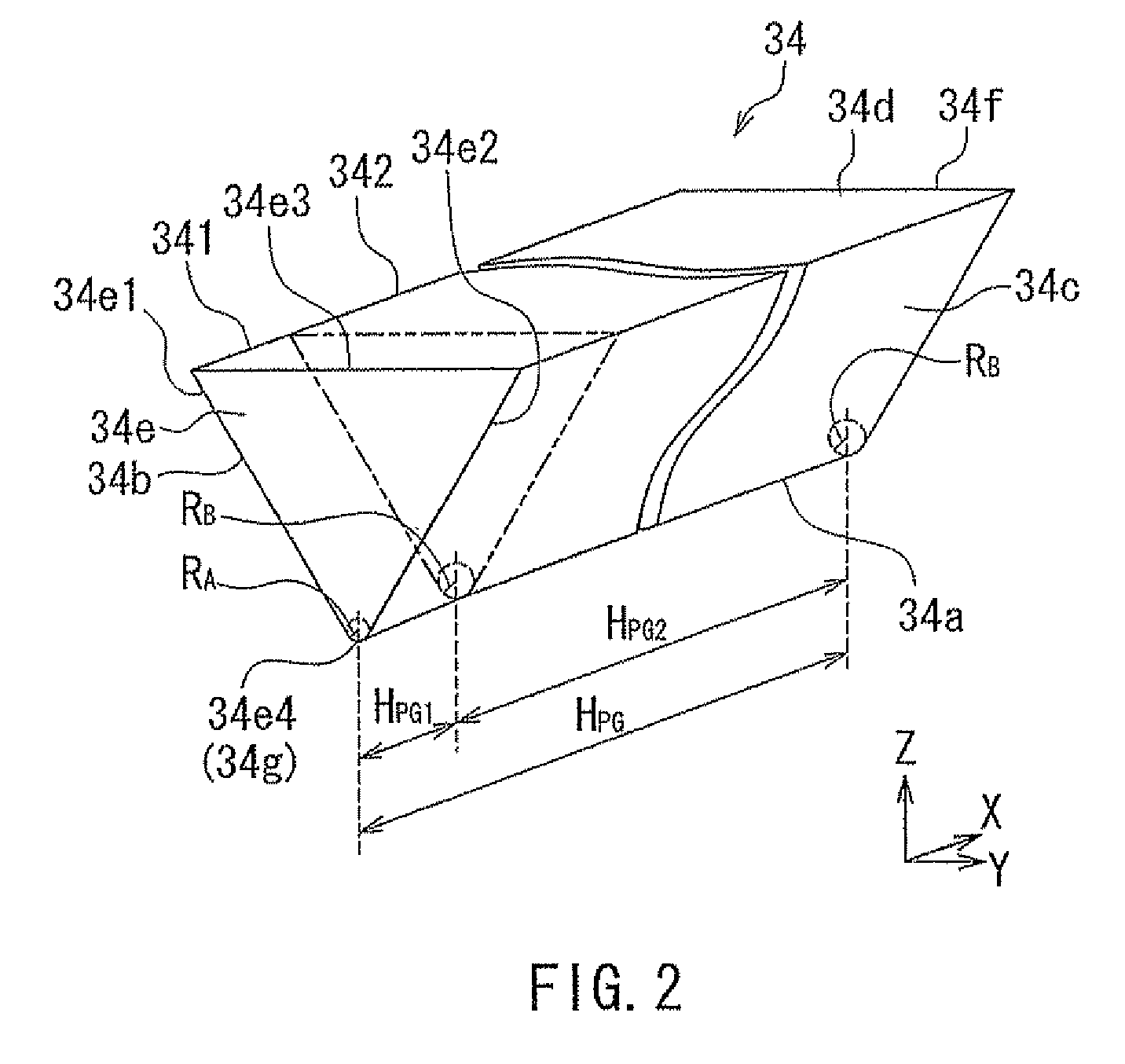Heat-assisted magnetic recording head including plasmon generator
a technology of magnetic recording head and plasmon generator, which is applied in the field of heat-assisted magnetic recording head, can solve the problems of increasing the coercivity of the magnetic recording medium, reducing the thermal stability of the magnetization of the magnetic fine particles, and difficult to perform data writing with the existing magnetic recording head
- Summary
- Abstract
- Description
- Claims
- Application Information
AI Technical Summary
Benefits of technology
Problems solved by technology
Method used
Image
Examples
first embodiment
[0061]Preferred embodiments of the present invention will now be described in detail with reference to the drawings. First, reference is made to FIG. 6 to describe a magnetic disk drive as a magnetic recording device according to a first embodiment of the invention. As shown in FIG. 6, the magnetic disk drive includes a plurality of magnetic disks 201 as a plurality of magnetic recording media, and a spindle motor 202 for rotating the plurality of magnetic disks 201. The magnetic disks 201 of the present embodiment are for use in perpendicular magnetic recording. Each magnetic disk 201 has such a structure that a soft magnetic backing layer, a middle layer, and a magnetic recording layer (perpendicular magnetization layer) are stacked in this order on a disk substrate.
[0062]The magnetic disk drive further includes an assembly carriage device 210 having a plurality of driving arms 211, and a plurality of head gimbal assemblies 212 attached to respective distal ends of the driving arm...
second embodiment
[0144]A second embodiment of the present invention will now be described with reference to FIG. 22 to FIG. 25. FIG. 22 is a perspective view showing the core of the waveguide, the plasmon generator, and the magnetic pole of the heat-assisted magnetic recording head according to the present embodiment. FIG. 23 is an exploded perspective view of the plasmon generator and the magnetic pole shown in FIG. 22. FIG. 24 is a front view showing the core, the plasmon generator, and a first layer of the magnetic pole shown in FIG. 22. FIG. 25 is a cross-sectional view showing respective cross sections of the core, the plasmon generator, and the first layer of the magnetic pole shown in FIG. 22 parallel to the medium facing surface. FIG. 26 is a cross-sectional view showing the core of the waveguide, the plasmon generator, and the magnetic pole of the heat-assisted magnetic recording head according to the present embodiment. The heat-assisted magnetic recording head according to the present emb...
third embodiment
[0167]A third embodiment of the present invention will now be described with reference to FIG. 28 to FIG. 30. FIG. 28 is a perspective view showing the core of the waveguide, the plasmon generator, and the magnetic pole of the present embodiment. FIG. 29 is an exploded perspective view of the plasmon generator and the magnetic pole shown in FIG. 28. FIG. 30 is a perspective view of the core and the plasmon generator shown in FIG. 28. The heat-assisted magnetic recording head according to the present embodiment has a plasmon generator 84 instead of the plasmon generator 34 of the first embodiment. In the present embodiment, as in the second embodiment, the magnetic pole 35 includes a first layer 351 and a second layer 352, the second layer 352 lying on the first layer 351.
[0168]As shown in FIG. 30, the plasmon generator 84 has a V-shaped portion 841 that has an end face located in the medium facing surface 12a. The V-shaped portion 841 extends in the direction perpendicular to the me...
PUM
| Property | Measurement | Unit |
|---|---|---|
| wavelength | aaaaa | aaaaa |
| emittable wavelength range | aaaaa | aaaaa |
| thickness TLA | aaaaa | aaaaa |
Abstract
Description
Claims
Application Information
 Login to View More
Login to View More - R&D
- Intellectual Property
- Life Sciences
- Materials
- Tech Scout
- Unparalleled Data Quality
- Higher Quality Content
- 60% Fewer Hallucinations
Browse by: Latest US Patents, China's latest patents, Technical Efficacy Thesaurus, Application Domain, Technology Topic, Popular Technical Reports.
© 2025 PatSnap. All rights reserved.Legal|Privacy policy|Modern Slavery Act Transparency Statement|Sitemap|About US| Contact US: help@patsnap.com



